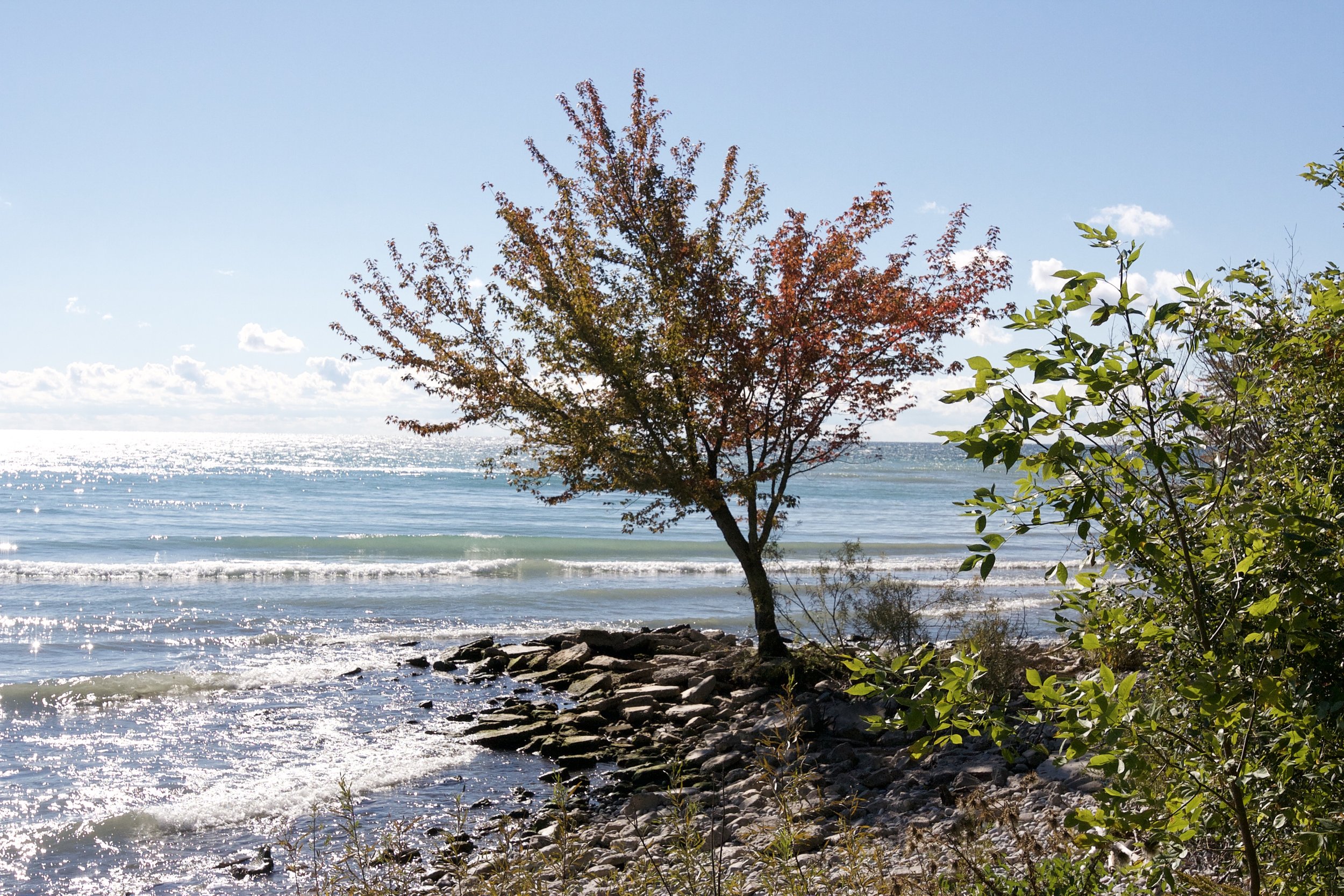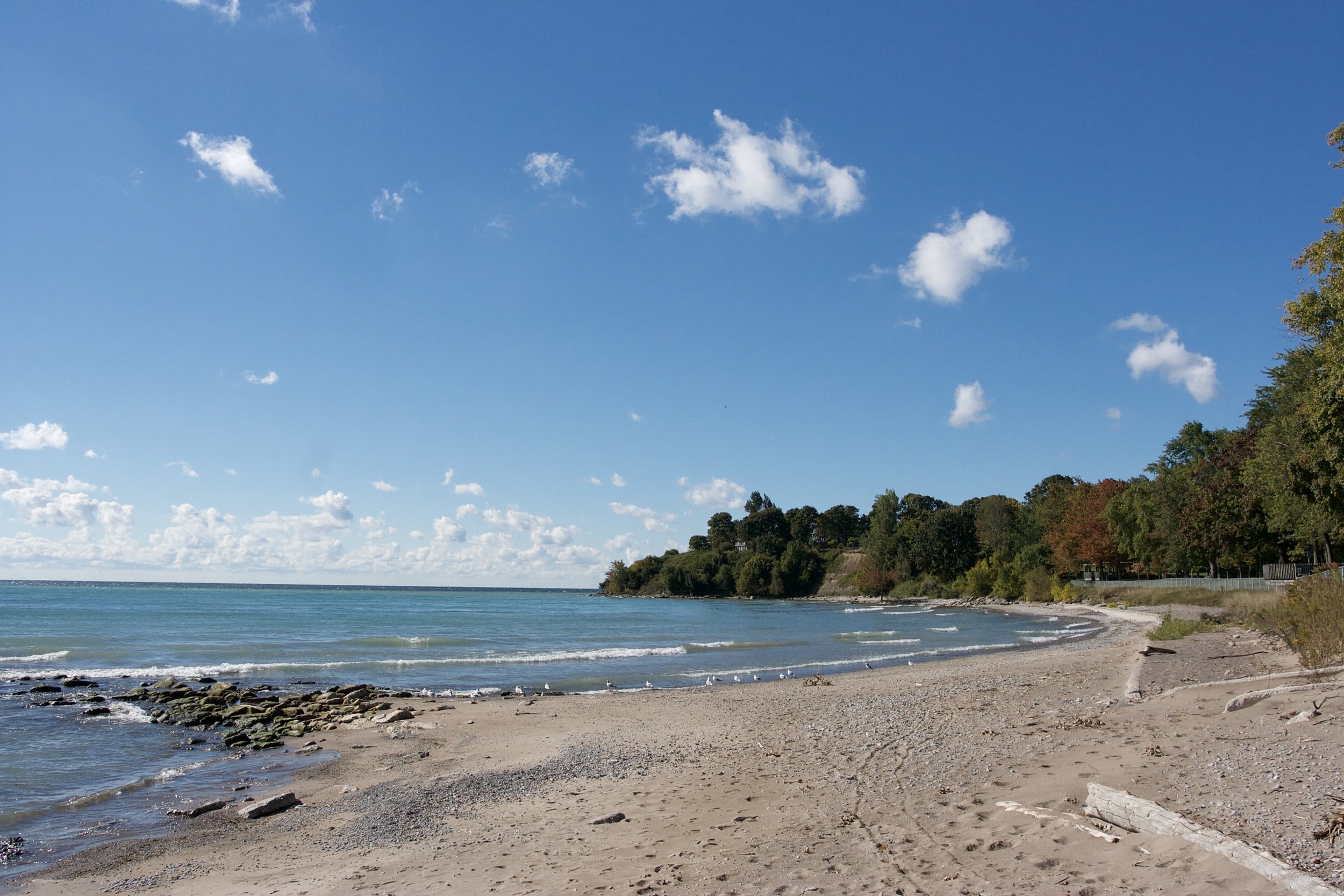In conversation with Dr. Robert Bailey: The impact of climate change on the environment and beyond
By Bhavya Bhushan & Drea Garcia Avila
Taken by Drea at Lake Ontario, a freshwater lake.
Dr. Robert Bailey, a professor of biology and Environmental Science in the Faculty of Science at Ontario Tech University, studies the effect of human activity on freshwater ecosystems. He currently teaches environmental sciences and statistics to both undergraduate and graduate students.
On November 18th, 2024, Dr. Bailey sat down with us to discuss the effects of various stressors, especially human-made, on our environment.
The interview has been edited for length and clarity.
Interviewers: What was your original motivation to do research, and has your motivation changed since then?
Dr. Bailey: Originally, I was more focused on “pure” science. I did my master's and PhD on clams, and as I became a prof, I had the opportunity to apply my work to something important to society. I got into the broader issue of bioassessment when we worked on the zebra mussel invasion of the Great Lakes in the eighties. Probably the biggest evolution of my research went from essentially measuring clam shells, to determining how projects such as Highway 413 in Ontario are going to change ecosystems.
What are some primary stressors that affect local organisms, and some subsequent damages?
Unsurprisingly, the overwhelming factor is climate change. Many impacts on an ecosystem relate to today’s conditions and how the annual weather cycle is changing. It becomes challenging (and interesting) since every stressor interacts with climate change, each with different elements, rates, and starting points.
Over the last twenty years, there’s been more baby-boomers retiring and becoming permanent residents in the Kawartha Lakes region of Ontario—this human residential stressor combined with climate change has caused the lakes to change significantly. Notably, with shorter periods of below-freezing nighttime temperatures, many aspects of both aquatic and terrestrial environments change. Humanity’s impact, whether through road or bridge-building, is partly why climate change is such an overarching and interacting stressor. Pre-existing bioassessment approaches weren’t designed to track (climate) change. Mostly, the question is, “Is this site okay?” rather than “Has this changed over time?”
How do all these stressors trickle down, and is there a way for us to change what’s happening?
Often, with development proposals, the effects of stressors are simple: they’re going to obliterate habitats for plants, animals, and other organisms. By understanding why everything isn’t everywhere, we can determine the effects of certain projects. Organisms have to be able to arrive, survive, and thrive, and urban and road construction change the chemical and physical compositions of environments, which create pressures.
We're often asked what size of buffer strips are required between roads and forestry, but how do you measure that? We must find a middle place where we present the best way to do something if it is unavoidable. In my classes, we challenge perceived notions of sustainability and “common knowledge” statements. It’s not so straightforward, having both love and protectiveness for the environment, but also determining how to minimize consequences when something is necessary.
How do you feel about the work you do, your research and beyond?
Many who study “pure science” seem to look down on “applied research.” I love teaching and research, with interesting and varied bioassessment techniques. But a personal high point is working with undergrads on research: it’s not a lab where you know what you’ll find. This is not an out-of-textbook: they pick what interests them from ideas I suggest, pinpoint a project, and determine how to analyze data. I’m not trying to create graduate-school students; it’s more than that: it’s exposure to what real research is like, something that matters and has broader applications. We give our findings to our society, the ecological consequences of various human activities, and present them as clearly as possible to people who can dictate what happens.
We’re doing real research together.
How do you ensure that your research and your teachings are accessible and understandable for the general public, especially those who might come from a different background?
I try not to presume knowledge but just presume interest. In my graduate statistics classes, I have students bring their own data to the table. Every assignment they do has to apply what we’re learning to their data set, making the material more accessible and relevant. When I teach sustainability, I also try to make complex topics simpler. For example, I use Timbits to explain energy. I’m going to figure out how many food calories are in a Timbit and then translate all that into energy terms. It’s about making abstract concepts relatable and understandable.
I also recognize that people engage differently. Some students are more comfortable speaking up in class, while others might not be. So, I try to offer flexibility. If someone struggles with handwritten journals, they can record an audio version instead. It’s about creating an environment where everyone can engage in a way that works for them.
What key takeaways or lessons do you hope your students walk away with after completing your courses?
It really depends on the course. For example, I know many students are just taking my course as an elective, so my challenge is to make them realize how important it is, even if they never study Indigenous Studies again. I see it as a huge privilege to guide them through this material, not to lecture on my own views but to open doors for them and show them a different perspective. I think of myself as an academic travel agent, guiding them on a journey rather than just teaching content. In my sustainability courses, I want students to leave with a sense of the importance of these issues, even if they’re not majoring in it. I’m not trying to convert them to a particular field but rather share my passion and get them to think critically about these topics.
What are your hopes for the future, both personally and in terms of the broader field you work in?
I’m in the "last quarter" of my career, but I still enjoy it. I’ll probably work another three to five years, and before I’m done, I want to see our new sustainability program well-established. I’ve got a book coming out, Rethinking Bioassessment, which is all about approaching the field in a completely different way. I’ve got a lot of freedom in my work, being a full professor with tenure. It’s a luxury, honestly. I get to think freely and develop courses that blend teaching with research, which is something I really love. I’ve always enjoyed that combination.
When it comes to my work, I know a lot of people get focused on things like publication counts and how often their work is cited. I do fine in those areas, but what I’m most proud of are my top 10 cited publications—three of which were from undergrad thesis students. Those are the ones that mean the most to me because it was through those projects that I was able to give students real research opportunities. In fact, two of those students are now working in the field, which is great to see.
How do you envision today’s younger generations shaping the world and influencing the future?
It’s a great question. My daughter and I talk a lot about this, especially with her having young kids. She worries about their future. It’s tough because, unlike when I was growing up during the Cold War, today’s younger generations are facing much more overwhelming challenges—especially with climate change and the current geopolitical climate. I remember the Cuban Missile Crisis as a kid, and the fear of nuclear war was real, but I think the problems we face now are even more complex and urgent.
That said, I believe we still have the potential for progress. Look at how we dealt with the ozone hole. It was a huge global problem, and while it wasn’t perfectly solved, there was real progress. In the sustainability field, I see the potential for significant change, but it’s going to be incredibly challenging. The younger generations are really going to have to push for solutions, and I respect the work they’re doing. I want to help as much as I can before I’m done.
Drea Garcia Avila
is in their final year of a Bachelor of Science in Anatomy & Cell Biology with a minor in Neuroscience at McGill University. As a molecular biology lab technician and illustrator, Drea is specifically interested in medical illustration and the communication of scientific concepts to broad audiences in accessible, engaging, and inclusive ways. Their creative projects have centered representation, diversity, and inclusion both as the Creative Director at The Tribune newspaper, and in collaboration with other professionals in medical textbooks and research papers/presentations. As an aspiring medical illustrator, Drea is passionate about the impact that inclusive and diverse visual communication can have in marginalized populations and communities, especially in the context of disease, illness, and education; Drea is committed to making science communication anti-oppressive and accessible for everyone.



